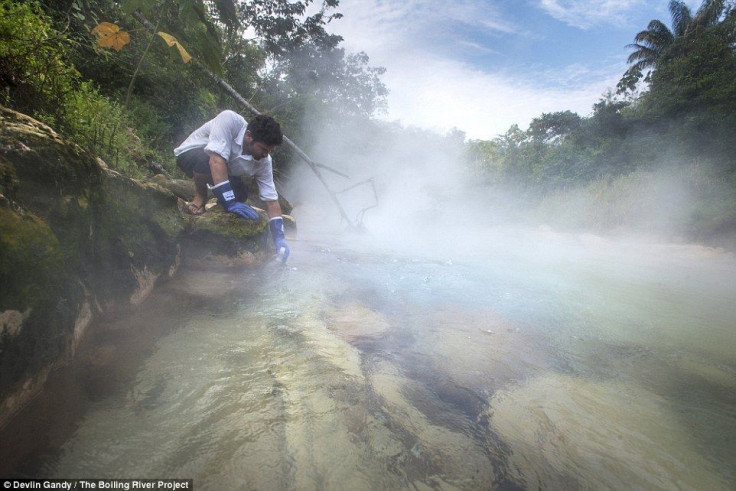Scientists discover boiling river in Peru rainforest

A PhD thesis that attempted to create the first detailed geothermal map of Peru, to include parts of the Amazon, led the student at Southern Methodist University to discover a river that his grandfather told him when he was 12.
It was no ordinary body of water, but a boiling river at Mayantuyacu which geoscientist Andres Ruzo detailed in his new book “The Boiling River: Adventure and Discovery in the Amazon.” According to Ruzo’s grandfather, the river which boils from below was discovered by some of the men who fled deep into the Amazon’s rainforest after they Spanish conquistadores killed the last Inca emperor of Peru.
Some of the men who returned described their journey, including difficulties encountered such as illness, lack of food, dangerous snakes, poisoned water and the river, reports Gizmodo.
Ruzo’s school colleagues dismissed the tale of the boiling river. He asked about it from friends in the university, government and mining companies, but all said such as river do not exist. However, 20 years after his grandfather told him about the river, during a family dinner, his aunt who has been to one, mentioned it, reports Daily Mail. She took him to Mayantuyacu which is a geothermal river that measures 25 metres wide and six metres deep. The length is about 4 miles.

The water is so hot that a visitor could brew tea or coffee on it, and creatures that unfortunately fall into it would either be boiled alive or suffer extensive skin burns. The temperature of the river’s water is about 207 degrees Fahrenheit. The river attracts some tourists yearly who also come to the area to have a taste of the Ashaninka people’s traditional medicinal practices.
Following the discovery, Ruzo is currently holding detailed geothermal studies as he tries to place its context in the Amazon basin. In collaboration with microbial ecologists, they are studying the extremophile organisms that live on the boiling river in the hope of acquiring insights into life on Earth billions of years ago when life was harsher.





















